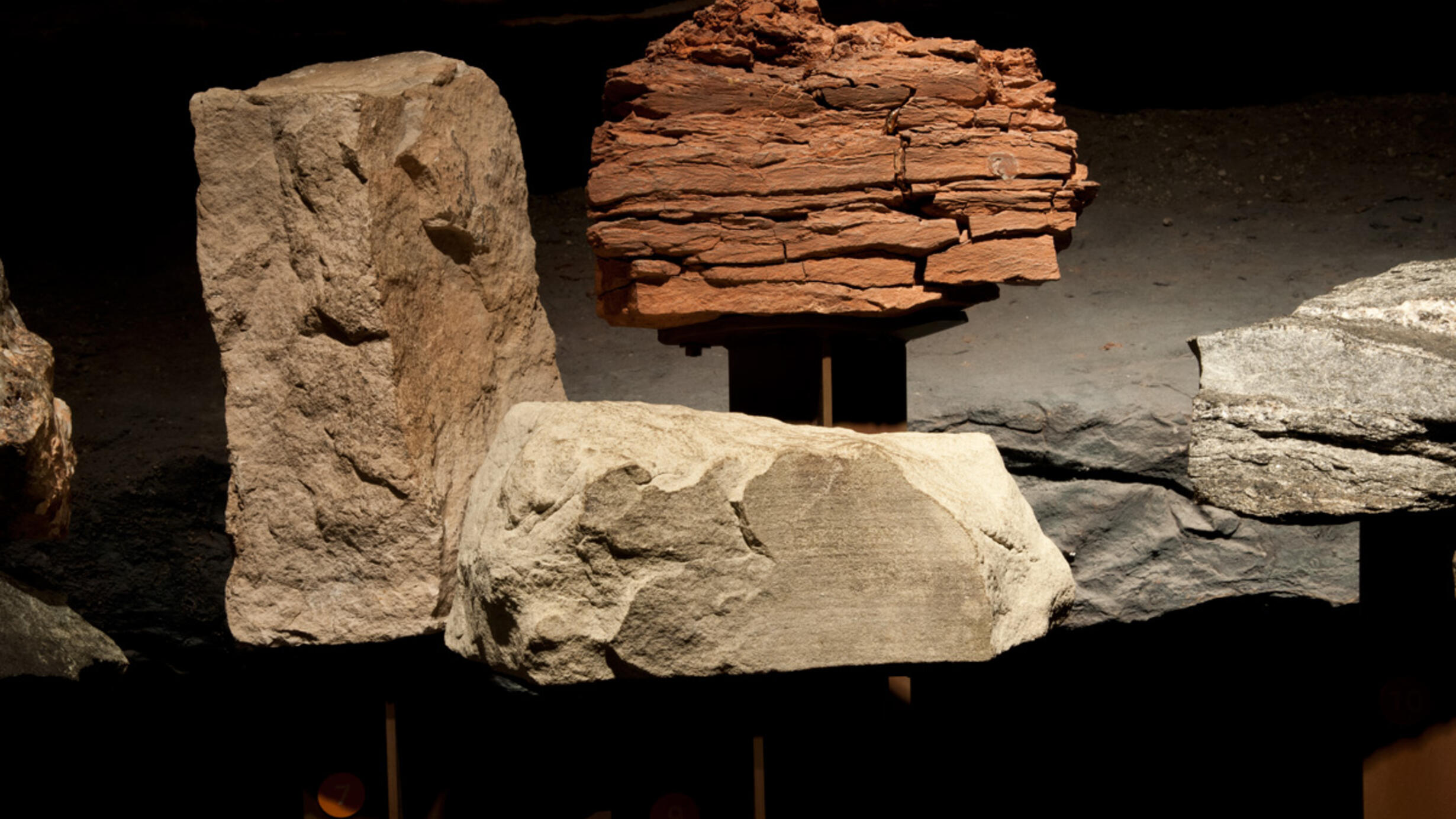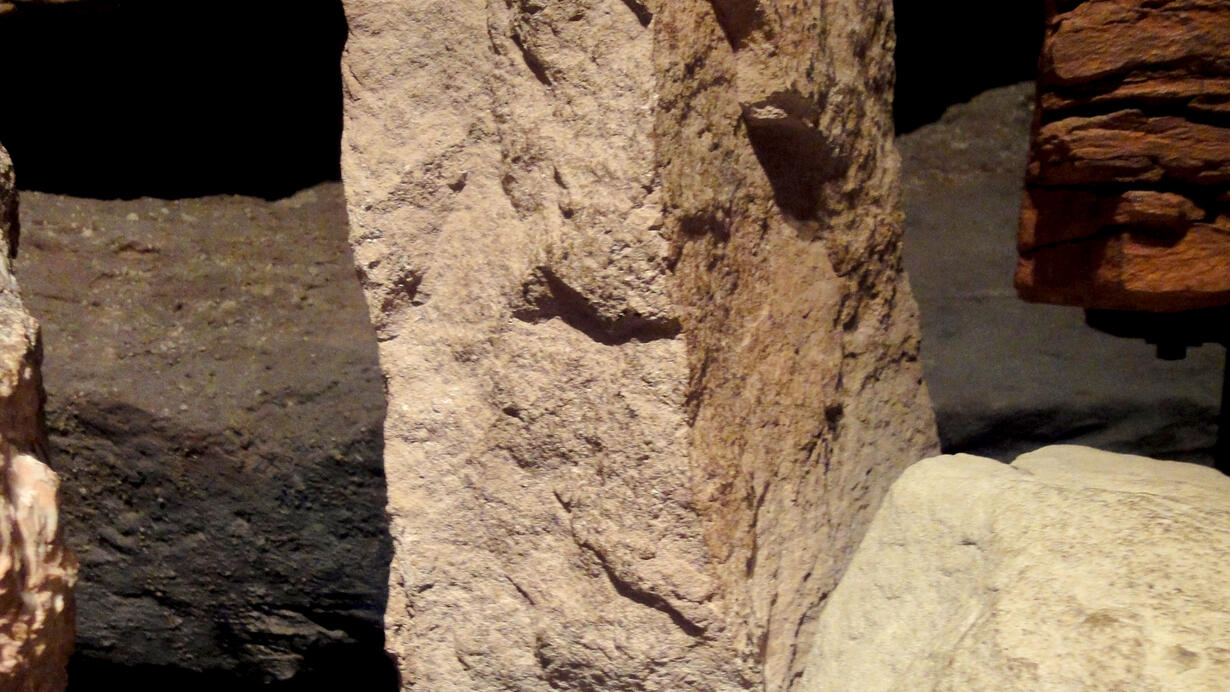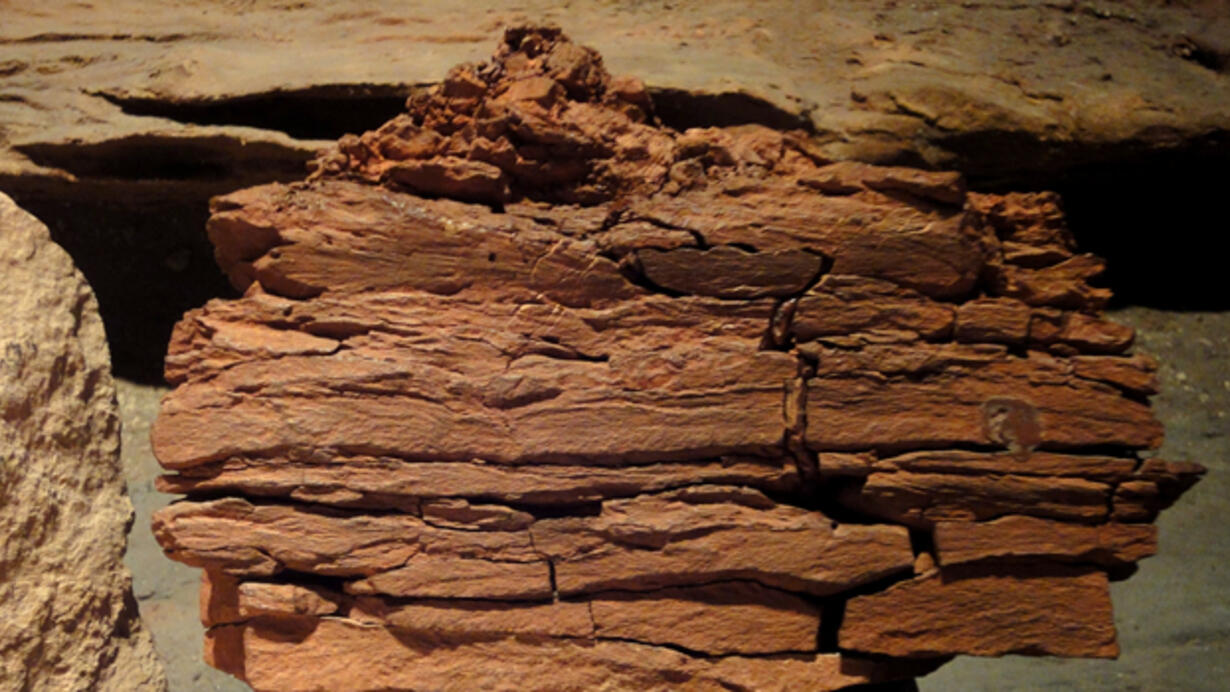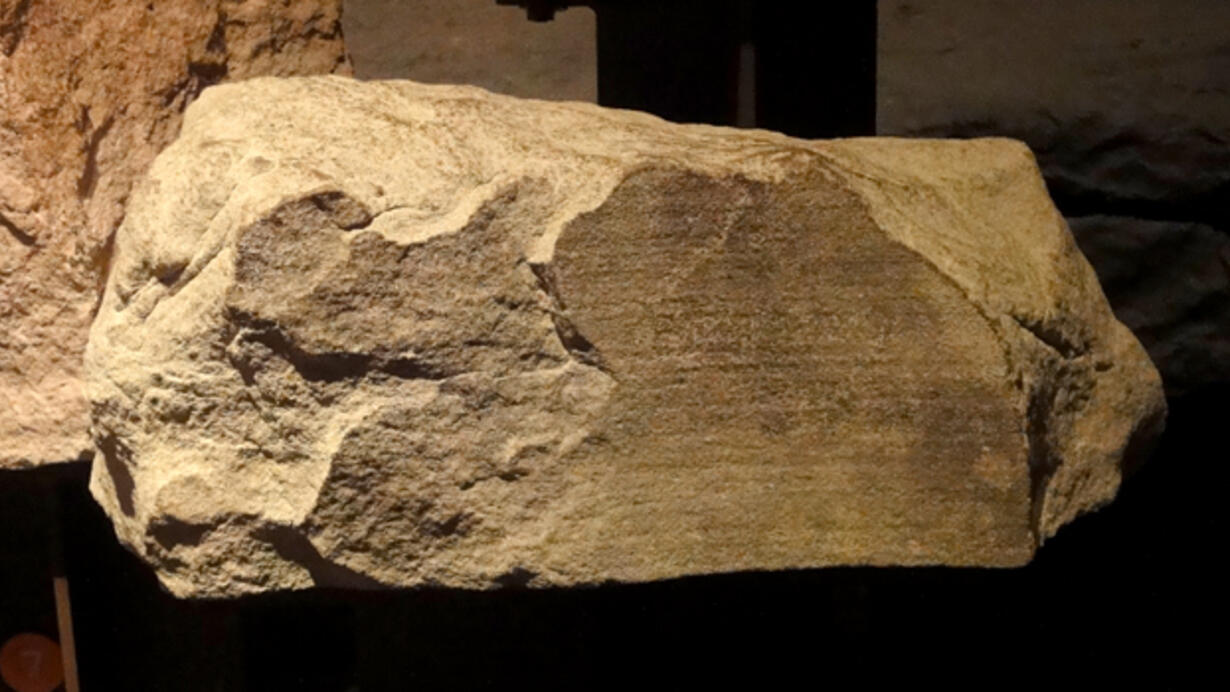Sedimentary Rocks
Part of Hall of Planet Earth.

Sedimentary rocks are layered. Some form when particles of rocks and minerals settle out of water or air. Others form when minerals precipitate directly out of water. Sedimentary rocks are identified by their minerals and texture.
As the sediments pile up, water is driven out by the weight of the overlying pile, and minerals precipitate around the sediment particles, cementing them into rock. This process is called lithification.
In This Section
 Limestone is one of the most widespread sedimentary rocks. Many organisms, from corals to microscopic foraminifera, grow shells composed of carbonates. Most limestone forms when these organisms die and their carbonate shells accumulate in shallow seas.
Limestone is one of the most widespread sedimentary rocks. Many organisms, from corals to microscopic foraminifera, grow shells composed of carbonates. Most limestone forms when these organisms die and their carbonate shells accumulate in shallow seas. Limestone
Limestone is one of the most widespread sedimentary rocks. Many organisms, from corals to microscopic foraminifera, grow shells composed of carbonates. Most limestone forms when these organisms die and their carbonate shells accumulate in shallow seas.

Shale
Shale is made up clay and silt, particles that are finer than sand. Clay and silt are deposited in slow-moving rivers, at the far ends of deltas, and in other quiet environments where slow-moving water cannot keep the particles suspended.

Sandstone
Sandstone is made of sand, which accumulates in rivers and along ocean shores where water moves fast enough to remove the finer particles. Sandstones can also be deposited by winds to form sand dunes.
Donated by Schlumberger, Ltd.